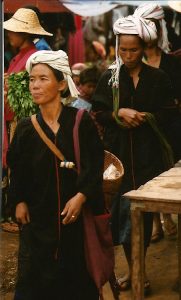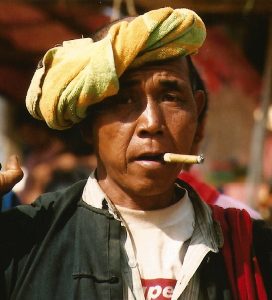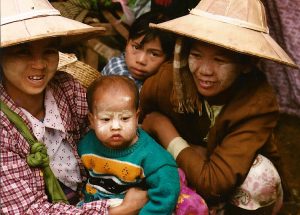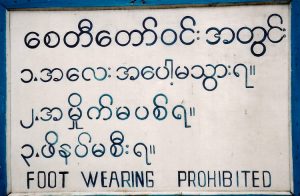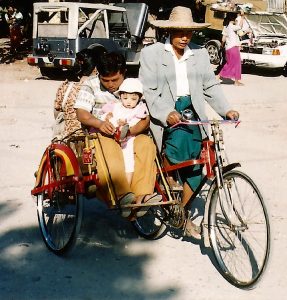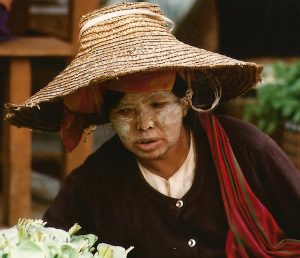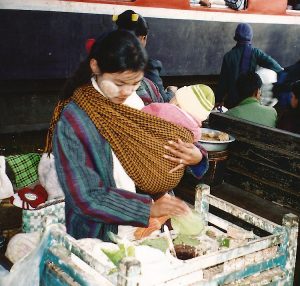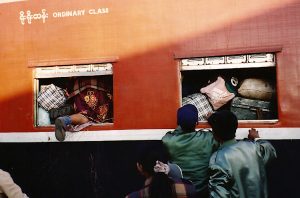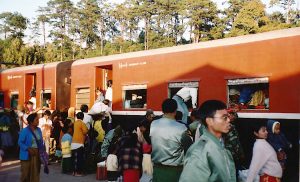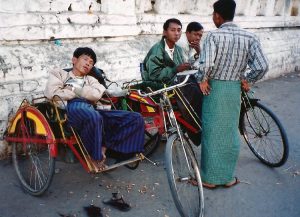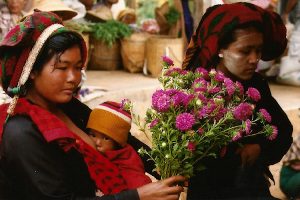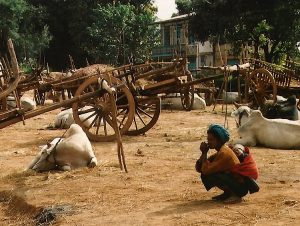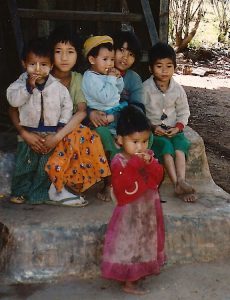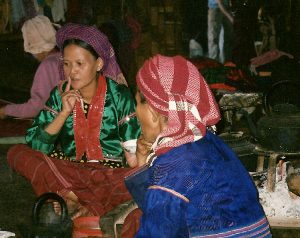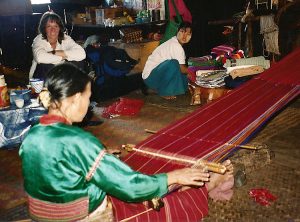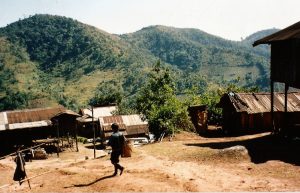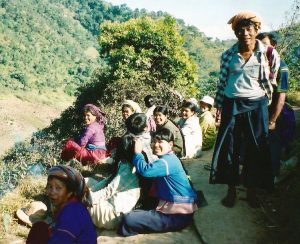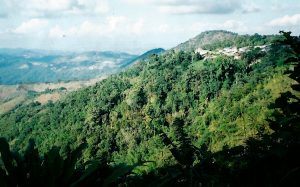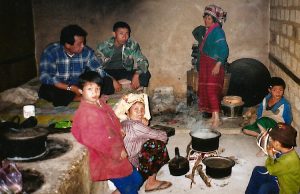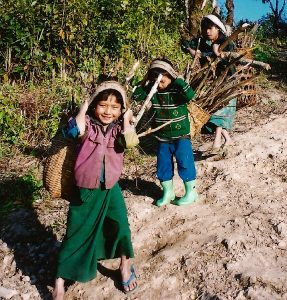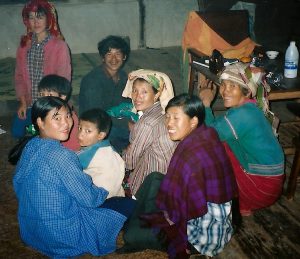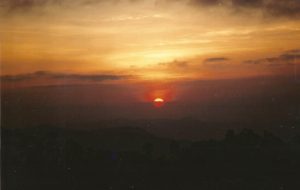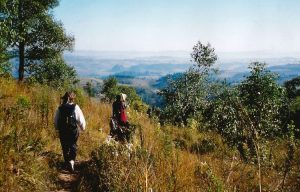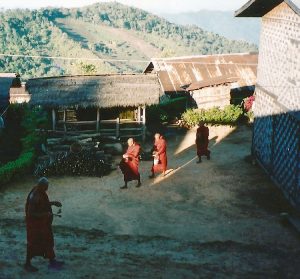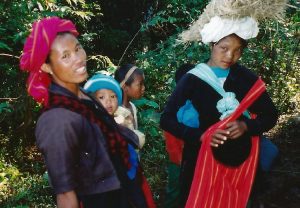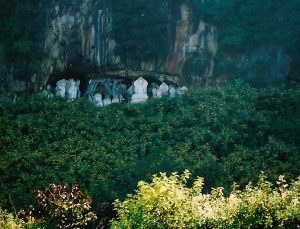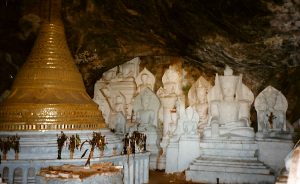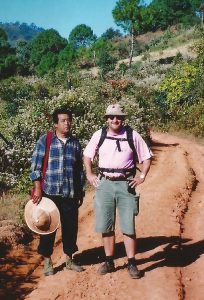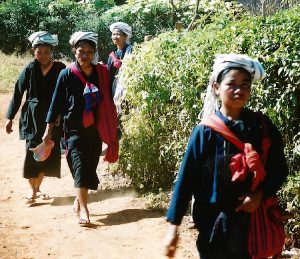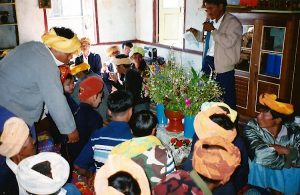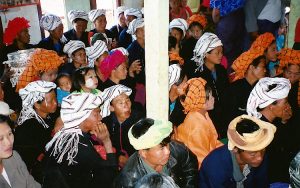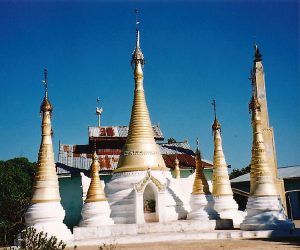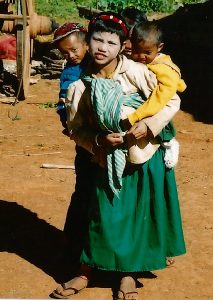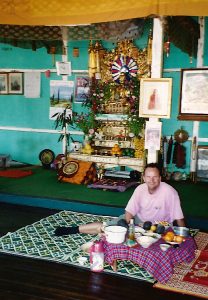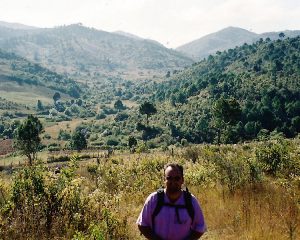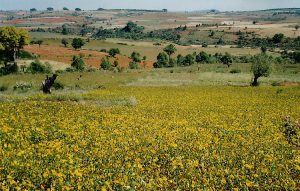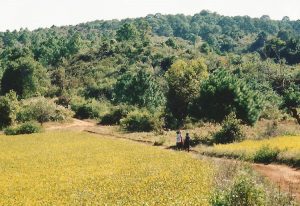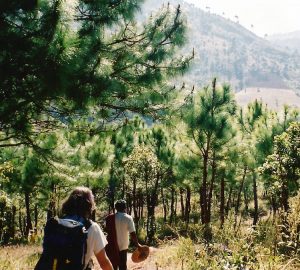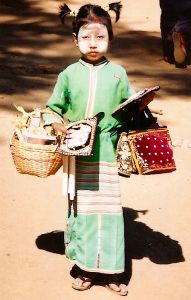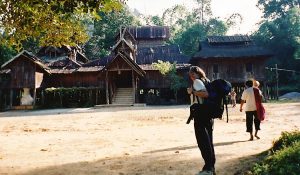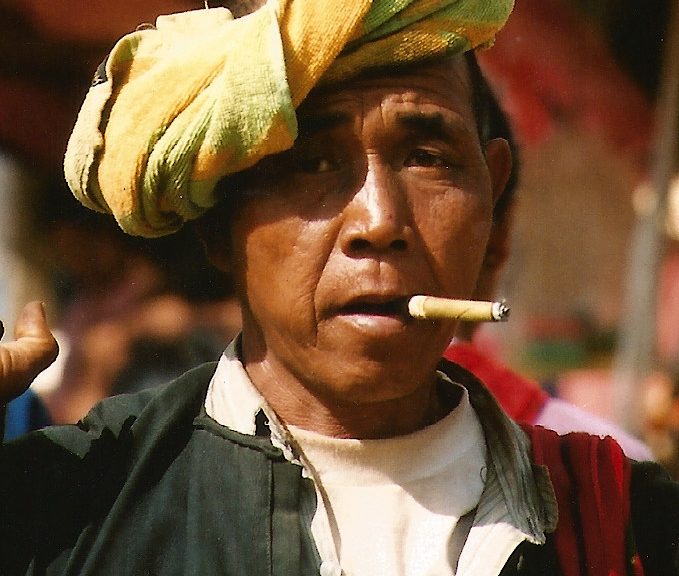
Kalaw
I got on the bus from Yangon to Mandalay as planned and found myself sat next to a mad Italian vet called Carla who happened to know a mutual friend in Hanoi. She was good company but talked a lot. The other foreigners on board were an Israeli girl called Udit, who I described in my diary as being very thoughtful and introspective and an American, Jennifer, who was quite independent and interesting. They had been to a Buddhist monastery for a meditation course but had found it too stressful! Thirty minutes out of Yangon we stopped for the first time. A bloke got out and headed off to find a part for the bus. He returned with the wrong part. We were there for four hours until the right part showed up. Breakdowns in Asia are not new to me and as ever there was a stall by the side of the road selling snacks and beers so all was not lost. We headed off and despite a few more stops it was soon dark and the travellers were nodding off. The following morning dawn broke to scenery of hot dry plains interspersed with a few dry forests. Eventually at 1pm we arrived at a bus station which we thought was Mandalay, only 4.5 hours late so not too bad. Wrong! We were at a place called Meiktila and the bus had broken down again. Me and the girls had a very nice curried lunch in the bus station to plan our next move. We decided to leave the bus and hire a car to Kalaw. This was a hill station popular in the colonial days and now still so with trekkers as an alternative to the more touristy (for Myanmar!!) Inle Lake.
Anyway, we hired a sturdy looking Toyota for $40 and piled in. The road went up, up, up into the hills before we had the inevitable breakdown. I could tell from the burning smell that the gearbox was totally frizzed. However we did manage to get going again and were in a better state than the many trucks and cars we had seen broken down by the roadside or lost over the side of the mountain! We limped into Kalaw at 6.30pm, 27 hours after setting off and a totally different destination to the plan. We managed to find the Eastern Paradise Hotel and checked in. The girls moved into a very large three bedroomed room and I got a single for $8. We headed into town for something to eat and found the Seven Sisters Restaurant (apparently it’s still in business but now called Thirigayha Restaurant) and were served by a number of friendly young women, perhaps the sisters. They didn’t look like the Burmese people I had seen in Yangon, but as we were now in Eastern Shan state they were of a different ethnicity, more Thai-like.






Kalaw is located in Shan State which in turn constitutes nearly a quarter of the area of Myanmar. Half of the people in Shan State are ethnic Shan, the remainder Burmese and other ethnic minorities. Because of its elevation most of the state is unsuitable for rice growing, but very suitable for poppies and therefore opium cultivation. It is in these areas that the Shan Rebel Army and Chinese opium warlords operate. Having said that Kalaw itself is safe (at least I thought so). At 1300m it is pleasantly cool and an excellent place to go hiking amid pine forests, bamboo groves and generally rugged mountain scenery. And that is why I had decided to come here. I asked the bloke at the hotel about trekking and he asked wouldn’t we celebrating Christmas? It had completely slipped our minds, but we didn’t anyway. Christmas Day was rather cloudy and damp but it was good to relax and just wander around the local market and try some local delicacies – Shan noodles and the local tea. I also headed to the train station. Just as well I wasn’t going anywhere – it was packed with people pushing and shoving and climbing through the windows of the train – mayhem!
Interestingly, Kalaw itself has a mixture of ethnicities including Nepalis – Gurkhas retired from British Military Service and a few of them have opened excellent curry houses. That night we headed to the Everest Nepali Food Centre and had a very good curry.
26th December
Me and Carla employed Uzon, a local guide, to take us on a trek for few days into the hills which turned out to be one of the highlights of the whole trip. I had almost forgotten my love of walking in the great outdoors. We set out under clear blue skies breathing in the pure mountain air. On the outskirts of town I noted a variety of food being grown: mangos, pineapples, maize, castor beans, avocados and small orchards of mandarins which were delicious. We walked on past the fields and soon enough we stopped for lunch in a Palaung village in a smoky longhouse. The Palaung women generally wear purple longhis and not overly colourful clothes (certainly in comparison to the minorities I had encountered in Vietnam). In the afternoon we passed a monastery which doubles as a meditation centre. I noted that there weren’t many traditional wooden houses but many breeze-block houses with tin roofs and we stayed in one such place that night. Despite its apparent modernness, there was no chimney over the open fire so the few large rooms reeked of wood smoke that my clothes retained for days.
Supper was very good, as usual, tasty but not too spicy – pork (with a few hairs still attached to pieces of skin) with veggies, potatoes and snow peas washed down with Mandalay rum and a cigar to finish! The house we stayed in was the poshest in the village and the only one with a TV so some of the locals came that night to see what was on. Not much I seem to remember. Although they may have been there not for the TV but for a wandering palmist who told futures for a few kyats. This all took place in a large room with no furniture what so ever, except for the table and chairs at which me, Carla and the guide ate. Everyone else sat on the floor. The sleeping area was behind a small shrine which itself was behind the TV which was covered with a cardboard box when not in use. The guide told us proudly it had come from China. I went to bed and left the others watching the TV. I brushed my teeth outside where the milky way was amazing. There were no lights at all in the village and the only sound (apart from the TV) was the gentle tinkling of cow bells. Despite sleeping on a hard floor I slept well and deeply.
The following morning I was awoken to a breakfast of warm cocoa (I think) and cake. We set off over rolling hills and a through a patchwork of coloured fields of mustard, bean, ginger, radish and garlic. Our guide told us they used to cultivate opium here but most had converted to these cash crops. We mainly followed bullock cart tracks. At one stage we passed a cave which was packed with images of the Buddha. Shortly after we heard music from afar and ladies who were passing, carrying firewood told us there was a wedding taking place in a nearby village. We were welcomed as a good omen and then given an array of things to eat – more pork but also sliced ginger, sweets and peanuts. It was quite a long wait until anything happened but then almost unnoticed the wedding couple arrived and sat down near us. The bride looked beautiful in a blue tunic and her best towel headscarf and the groom was the only man I saw wearing a blue striped polo shirt. The M.C. had a microphone and apparently told stories and introduced the parents of the couple while everyone else just ignored him and chatted amongst themselves. It was interesting to see most of the women in blue but the younger ones in orange. All the men seemed to wear yellow/orange towel headscarfs. Apparently these were Danu people who dress very similarly to the Pa-O but speak a very different language.
From here the landscape changed and we went through a large pine forest until we arrived at another monastery perched on top of a hill. There were very friendly monks here who offered us a lunch of noodles and fish. Then up and down over small hills, all topped with white stupas. That afternoon it became apparent that we had completed a large circle as we arrived back in Kalaw, exhausted but satisfied. A full two days of walking for $12.
That night we went back to the Nepali Food Centre and then an early night so I was ready for another interesting bus journey the following day: to Mandalay.
